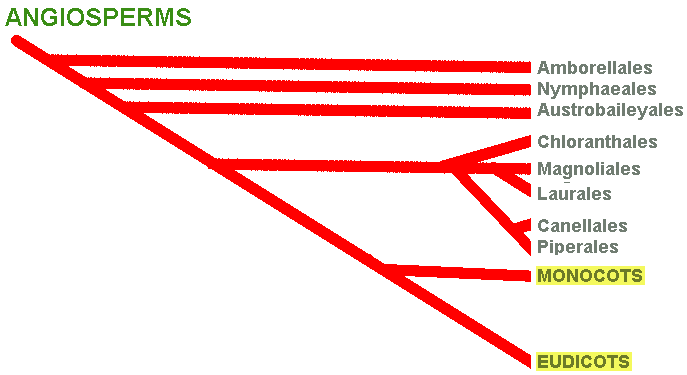The world of flowering plants -- the angiosperms -- no longer is thought to be divided neatly into monocots and dicots. Studies using gene sequencing have revealed a more complex system of relationships, as shown below. Many experts would disagree with some details of the following, and the concepts probably will change as more information is developed:

The above is a redrawn and simplified "phylogenetic tree" of the angiosperms, as represented in 2021 at the Angiosperm Phylogeny Website. Note the various angiosperm groupings considered to be neither monocots nor eudicots. (The term "Dicot" is considered outdated.)
Many important flowering plants are now considered to be neither Monocots or Eudicots. Magnolia trees are assigned to Magnoliales as are many kinds of water lilies, belonging to the Nymphaeales. Sassafras, Bay Laurel, Cinnamon, and Avocado trees reside in the Laurales, and the woody vine providing black pepper, of "salt and pepper" fame, belongs to the Piperales
As of 2021, the Wikipedia "Flowering plant" page reported about 300,000 known species of flowering plants, or angiosperms, in 64 orders, 416 families, and approximately 13,000 known genera. An estimated one-fifth of all vascular plants are yet to be discovered, mainly in the tropics.
In 2020, a report published by the Royal Botanic Gardens Kew placed about 40% of the world's flora and fungi at risk of extinction.